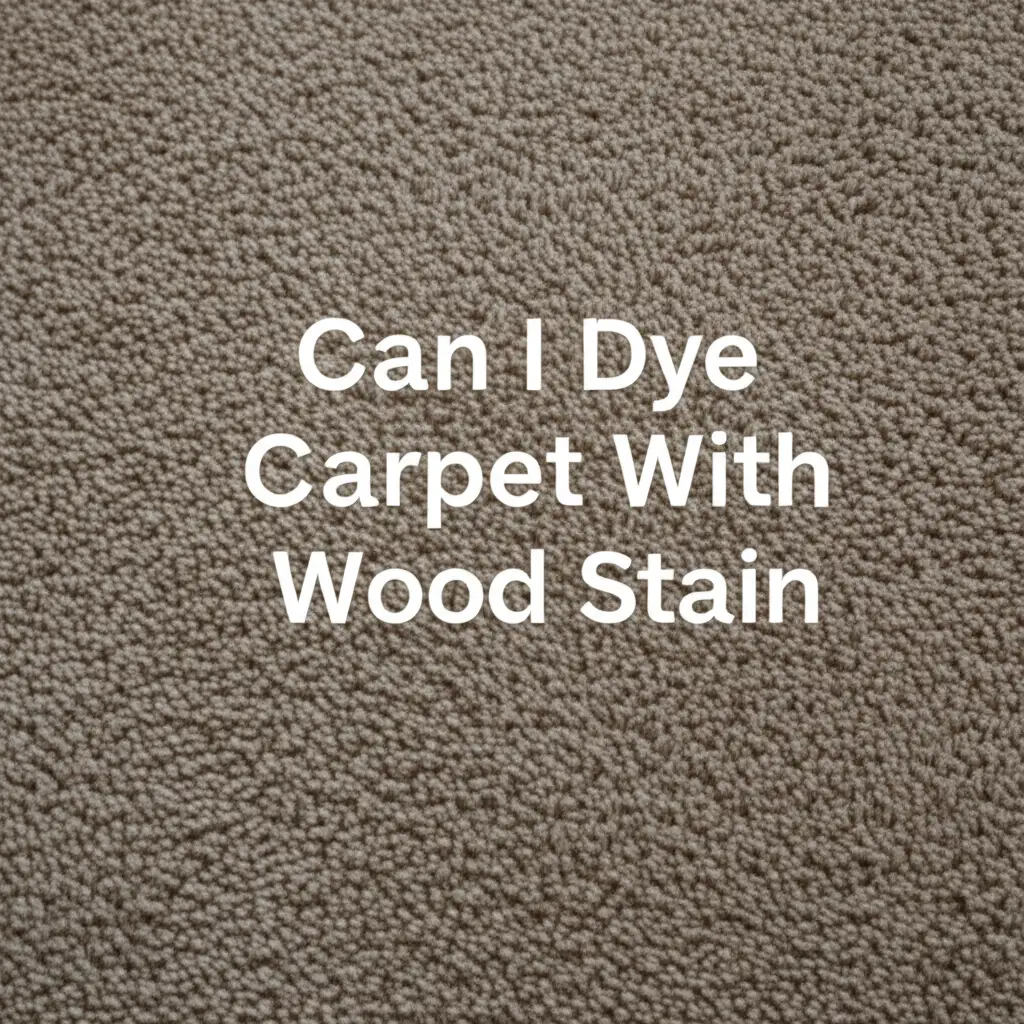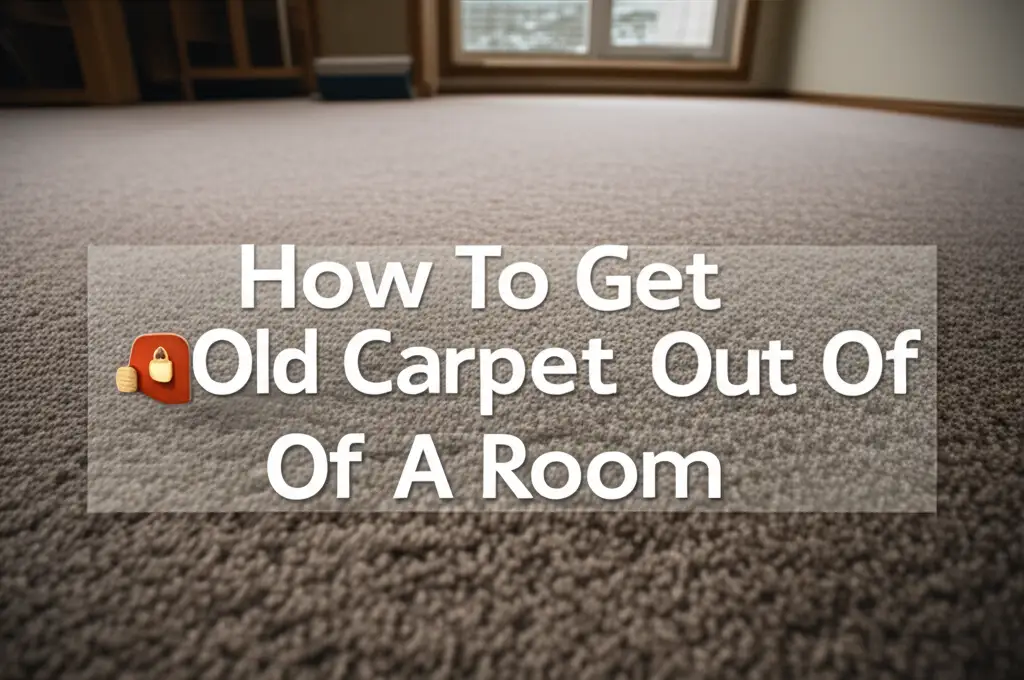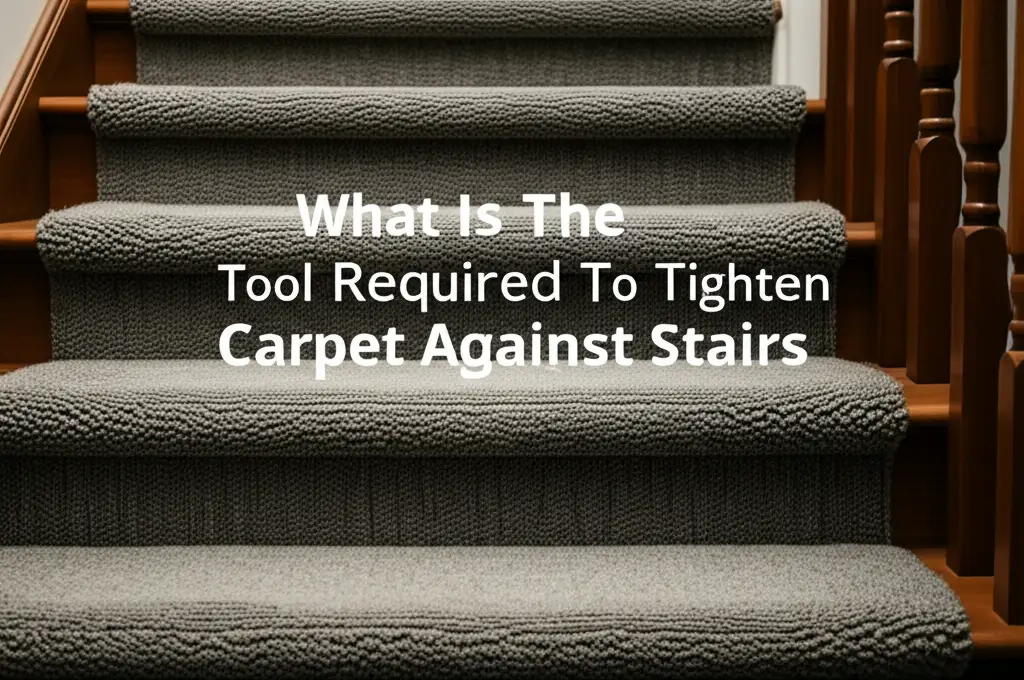· Liora Benning · Home Improvement · 12 min read
Can I Dye Carpet With Wood Stain

Can I Dye Carpet With Wood Stain? Understand the Risks
Changing your home’s look can be exciting. You might consider quick fixes for tired flooring. A common thought is to dye carpet with wood stain to refresh its color. I have heard this question many times. People want to know if wood stain works on carpet fibers. This article explores why using wood stain on carpet is not a good idea. We will discuss the issues that arise from this attempt. We will also present proper methods for dyeing carpet safely and effectively. You will learn about suitable materials and techniques to achieve your desired carpet color.
Takeaway
- Wood stain is not suitable for dyeing carpet.
- It causes stiffness, uneven color, and potential damage to carpet fibers.
- Only use dyes specifically made for textiles or carpets.
- Always test dyes on a hidden area of the carpet first.
- Consider professional dyeing or replacement for best results.
Can I Dye Carpet With Wood Stain?
No, you cannot effectively dye carpet with wood stain. Wood stain is designed for wood. It absorbs into wood grain. Carpet fibers are different. They need specific textile dyes. Using wood stain on carpet causes damage, stiffness, and uneven color.
The Chemistry Behind Carpet and Wood Stain
Carpet and wood are very different materials. Wood stain works by soaking into wood pores. It changes the wood’s color. Carpet is made of fibers like nylon, polyester, or wool. These fibers do not have pores in the same way wood does. This means wood stain cannot bond with them properly.
Wood stains often contain pigments and binders. These components are made for rigid surfaces. They are not meant for flexible fabrics. When you apply wood stain to carpet, it sits on the surface. It does not penetrate the fibers evenly. This leads to a splotchy, stiff finish. The carpet will feel rough, not soft. It might also crack or flake off over time. I know you want a good result. This method will not give it.
Understanding Carpet Fibers
Carpet fibers are complex. They are designed for softness and durability.
- Nylon: This is a synthetic fiber. It takes dye well. It is very strong.
- Polyester: This is also synthetic. It resists stains. It can be hard to dye.
- Wool: This is a natural fiber. It dyes easily. It is soft and resilient.
Each fiber type needs a specific dye process. Wood stain chemicals are too harsh for these fibers. They can break down the fiber structure. This causes irreversible damage. You might ruin your carpet permanently. This is why choosing the right dye is important.
Why Wood Stain Fails on Carpet Fibers
Using wood stain on carpet fibers creates many problems. The stain is not designed for textiles. It cannot bond correctly. This causes poor results. The carpet will not look good.
First, wood stain does not absorb evenly. It often pools on the surface. This leads to blotchy patches. Some areas might be darker. Other areas remain lighter. You will see an uneven color. This is not the uniform look you want.
Second, wood stain hardens when it dries. It forms a stiff layer. This makes the carpet feel rough. It loses its soft texture. Walking on a stiff carpet is uncomfortable. The fibers can also become brittle. This makes them prone to breaking.
Third, wood stains contain chemicals. These chemicals can be toxic. They can release fumes into your home. This affects air quality. The smell might linger for a long time. It can be unsafe for people and pets. Proper carpet dyeing uses non-toxic dyes.
Finally, wood stain offers no durability on carpet. It can chip or flake off. This leaves a mess. It also exposes the original carpet color underneath. Your effort will be wasted. Instead of improving your carpet, you will damage it.
The Right Way to Dye Carpet: Proper Textile Dyes
If you want to change your carpet color, use textile dyes. These dyes are made for fabric. They penetrate fibers correctly. They create a lasting color. Many options exist for carpet dyeing. You can choose from acid dyes, direct dyes, or all-purpose dyes.
Before you start, clean your carpet thoroughly. Remove all dirt and stains. A clean surface helps the dye absorb better. You can find guidance on removing tough stains like blackberry stains or general carpet stains with peroxide and steam iron. After cleaning, let the carpet dry completely. Any moisture can affect dye absorption.
Test the dye in a hidden spot first. This helps you check the color. It also shows how the carpet reacts. A closet corner or behind furniture works well. This step prevents mistakes on visible areas. You can also dye a cheap area rug as a practice run. It helps you gain confidence.
Choosing the Correct Dye Type
The type of dye you need depends on your carpet’s fiber content.
- Acid Dyes: These work well for nylon and wool carpets. They need heat and an acidic environment. You can apply them with a spray bottle. They create vibrant, lasting colors.
- Direct Dyes: These are suitable for cotton and rayon. They are not ideal for most carpets. Some carpets have synthetic blends. Direct dyes might not bond well with them.
- All-Purpose Dyes: These can work on a range of fibers. They are less vibrant than acid dyes. They are good for a subtle color change. They are often easier to use for beginners. You can even dye polyester in a washing machine with certain dyes, but this is not for installed carpets.
Always read the dye product instructions. They provide specific guidance. Following these steps helps ensure good results. It protects your carpet from damage.
Step-by-Step Guide to Dyeing Carpet Safely
Dyeing carpet is a DIY project. It needs careful planning. Safety is important. Protect yourself and your home. My own experience shows preparation makes a difference.
1. Prepare Your Workspace: Remove all furniture from the area. Cover baseboards and walls with plastic sheeting. Use painter’s tape to secure the plastic. Lay down drop cloths on any areas you do not want dyed. This protects your other surfaces. Wear old clothes. Dye can permanently stain fabric.
2. Clean the Carpet: Vacuum the carpet thoroughly. Use a carpet cleaner to remove dirt and residue. Rinse the carpet well. Allow it to dry completely. A clean carpet absorbs dye better. This prevents patchy results.
3. Test the Dye: Mix a small amount of dye. Apply it to a hidden spot. Wait for it to dry. Check the color. See how the carpet reacts. Adjust the dye mixture if needed. This step is critical.
4. Apply the Dye: Use a spray bottle, pump sprayer, or paint roller. Apply the dye evenly. Work in small sections. Overlap your passes slightly. This ensures full coverage. Do not over-saturate the carpet. Too much liquid can lead to mold or mildew. A steady hand helps with even application.
5. Work from Light to Dark: If you want to go darker, apply multiple thin coats. Let each coat dry slightly. Then apply the next one. This method helps prevent unevenness. It also allows you to control the depth of color. Remember, you can always add more color. You cannot remove it easily.
6. Allow for Drying: Give the carpet plenty of time to dry. This can take 24-48 hours. Use fans to help airflow. Avoid walking on the carpet during this time. Once dry, vacuum the carpet. This lifts the fibers. It restores their softness. You might even consider if you can dry clean a carpet after dyeing for final touches, but it’s usually not necessary immediately.
Common Mistakes and How to Avoid Them
Dyeing carpet can go wrong. Many DIYers make similar errors. I have seen these mistakes myself. Knowing them helps you avoid problems.
One common mistake is skipping the cleaning step. Dirt and oil block dye absorption. This causes uneven color. Always clean your carpet well before dyeing. Use a good carpet shampooer. Ensure no residue remains.
Another error is not testing the dye. Every carpet reacts differently. The test patch shows you the true color. It also reveals how the dye spreads. Always test first. This saves you from a big mistake.
Applying too much dye at once is also common. This oversaturates the carpet. It makes the fibers stiff. It can also lead to mold. Apply thin, even coats. Build up the color slowly. This gives you more control.
Not protecting surrounding areas causes spills. Dye can permanently stain floors, walls, and furniture. Cover everything you do not want dyed. Use plastic sheets and painter’s tape. This prevents accidental damage.
Ignoring ventilation is dangerous. Dyes can release fumes. Work in a well-ventilated area. Open windows and doors. Use fans. Protect your lungs. Safety should always be your top priority. Following these tips helps you achieve a good result. It also keeps you safe.
Alternatives to Dyeing Carpet
Dyeing your carpet is one option. But other ways exist to change your floor’s look. Sometimes, a full dye job is not the best choice. Consider these alternatives. They might save you time or money.
One simple solution is to add area rugs. Area rugs cover existing carpet. They add color and texture. You can change them easily. This is a good choice for renters. It also works if you want to update a small section. Rugs come in many styles. You can find one to match any decor.
Another option is professional cleaning. Sometimes, old carpet looks faded. It just needs a deep clean. Professional cleaners remove embedded dirt. They can refresh the carpet’s original color. This makes your carpet look new again. It costs less than dyeing or replacing it.
If your carpet is old or damaged, consider replacing it. New carpet offers a fresh start. You can choose any color or style. Replacement is a bigger investment. But it guarantees a perfect look. It also improves home value. This is often the best choice for very worn carpets.
For minor discoloration, spot dyeing is an option. If only a small area is faded, you can touch it up. Use a small brush or sponge. Apply dye carefully. This works for small stains or sun-faded spots. This can save you from dyeing the whole room.
Finally, consider painting carpet. Yes, you can paint carpet. Special fabric paints are available. They work differently from dyes. They sit more on the surface. This can change the texture. It is a unique approach. It might be suitable for low-traffic areas or rugs. Each alternative offers different benefits. Choose the best one for your needs.
Maintaining Your Dyed Carpet
You successfully dyed your carpet. Now, proper care is important. Maintenance keeps the color vibrant. It extends the life of your carpet. I always advise my clients on this.
First, vacuum regularly. This removes dirt and dust. It keeps fibers clean. Use a vacuum with a beater bar for deep cleaning. Frequent vacuuming prevents dirt from dulling the color. It also keeps your home healthy.
Second, clean spills immediately. Fresh spills are easier to remove. Use a clean cloth. Blot the spill, do not rub. Rubbing spreads the stain. It also pushes it deeper into the fibers. For tough spots, use a carpet cleaner. Always test cleaners in a hidden area first. Some cleaners can affect dye color.
Third, avoid harsh chemicals. Many household cleaners contain bleach or strong solvents. These can strip the dye. They can create faded spots. Use mild, pH-neutral carpet cleaners. Always follow product instructions carefully. This protects your dyed carpet.
Fourth, consider professional cleaning every 12-18 months. Professionals use specialized equipment. They can deep clean without harming the dye. This keeps your carpet looking fresh. It removes deep-seated dirt. Regular professional cleaning helps maintain color saturation.
Fifth, protect your carpet from sun exposure. Sunlight can fade dyes over time. Use blinds or curtains. This blocks direct UV rays. Rotate furniture occasionally. This helps ensure even wear and color retention. Following these steps helps your dyed carpet last. It keeps your home looking great.
FAQ Section
Can I use fabric paint instead of dye on carpet?
Yes, you can use fabric paint on carpet. Fabric paint sits on top of the fibers. It does not penetrate as deeply as dye. This can change the carpet’s texture. It might make it stiffer. Fabric paint is better for small designs or area rugs. Always test it first.
What happens if I accidentally spill wood stain on my carpet?
If you spill wood stain on carpet, act fast. Wood stain is difficult to remove from carpet. Blot the stain immediately with a clean cloth. Do not rub. Use a solvent-based cleaner or mineral spirits. Test any cleaner in an hidden area first. For tough stains, you might need professional help.
How long does carpet dye typically last?
Carpet dye lasts for many years. Its lifespan depends on several factors. These include the dye quality, carpet fiber type, and foot traffic. Proper cleaning and sun protection extend its life. High-quality dyeing can last as long as the carpet itself. Expect it to stay vibrant for 5-10 years.
Is dyeing carpet a cost-effective solution compared to replacement?
Dyeing carpet is often more cost-effective than replacing it. Replacement involves material costs and labor. Dyeing can refresh an old carpet for a fraction of the price. However, dyeing works best on carpets in good structural condition. If your carpet is very worn, replacement is a better investment.
Can all types of carpet fibers be dyed successfully?
Most synthetic and natural carpet fibers can be dyed. Nylon and wool fibers dye very well. They absorb color easily. Polyester and olefin fibers are more challenging. They resist dye penetration. Always check your carpet’s fiber content before choosing a dye. Select a dye made for your specific fiber type.
Conclusion
The idea of using wood stain to dye carpet with wood stain might seem like a clever shortcut. However, as we have explored, this approach carries significant risks. Wood stain is not formulated for textile fibers. It causes stiffness, uneven color, and potential damage to your carpet. The chemicals in wood stain can also pose health risks. I hope this information helps you make a better choice.
For a successful carpet color change, always use products designed for fabrics. Textile dyes offer a safe and effective way to refresh your flooring. Remember to clean your carpet thoroughly. Test your chosen dye in an inconspicuous spot. Apply the dye carefully. Following these steps ensures a lasting, beautiful result. If your carpet is too worn for dyeing, consider area rugs or professional cleaning. Sometimes, a full replacement is the best option for a fresh look. Choose the right method for your home and enjoy your newly refreshed space!





